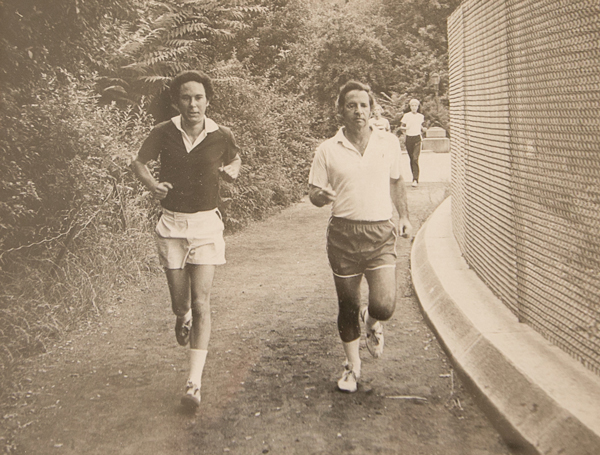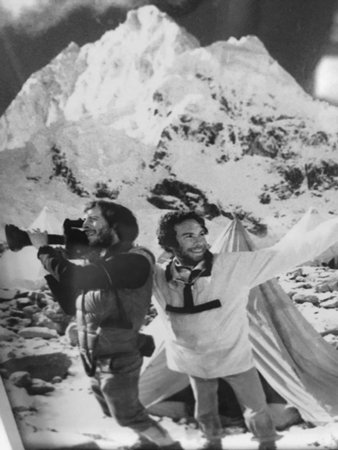Ed Goren on what it took to produce the 1977 one-hour documentary “To the Top of the World: Assault on Mount Everest,” in which he spent weeks in Everest’s base camp as head of the production team.
Soon after Barry Frank became president of CBS Sports in 1976, he calls me into his office. At that time, I’m a feature producer at CBS Sports working on taped events for “CBS Sports Spectacular.”
It was the first time I spoke with Barry, and he tells me, “I just did a deal with a group of amateur American climbers who are going to do a bicentennial climb of Mount Everest. You are going to start in Kathmandu. It’s a 187-mile trek to base camp. My only concern is that physically, are you going to be able to do this? What kind of shape are you in?”
I told Barry that I’m not in shape at all. I was smoking a couple of packs of Marlboro Reds per day. And I was out on Manhattan’s East Side drinking every night.
He just ignored me and asked, “What do you run a mile in?”
Barry lived on Fifth Avenue across from Central Park at the time, and he was in great shape. He ran the reservoir trail every day — which was around two miles. He said, “Meet me tomorrow at the reservoir. We’ll run the loop and see what kind of shape you’re in.”
 |
In a photo framed in his office, Goren (left) runs with Barry Frank in 1976 as he prepares for the Everest documentary.
Photo by: TONY FLOREZ PHOTOGRAPHY
|
We finish and he said, “OK, they are climbing Mount Rainier on a practice climb this weekend. Go home, pack up and get out there, and you’ll be going to Everest in a couple of months.”
A few months later, I assemble a camera crew and we start the Mount Everest climb. We’re trekking from Kathmandu. We’re in a rain forest on the second day of the trek. I am soaked. I have leech bites all over my body that didn’t heal for a year. We have porters taking us up to altitude at a town called Namche Bazaar. It had no electricity, no running water.
At one point, the climbers come to me and they say that the only people who are remembered from a climb are the ones who make it to the summit. They say, “We’ve had a meeting, we’ve taken a vote, and we’ve decided that we’re not going to tell the world who made it to the summit, just that we put a team on the summit. And we’re not going to take a camera up with us because everybody should share in the success.”
I have no communication with anybody back in New York. I am in Namche Bazaar in the middle of Nepal. And it’s 1976. There’s no cell phone. There’s no satellite phone. I’m stuck there with several camera crews.
 |
Goren and photographer taking in the sights on Mount Everest.
Photo: COURTESY OF ED GOREN
|
I tell the climbers, “I am so impressed by this team here. It’s one for all and all for one, and I think that is sensational. I am going to be rooting for you to put as many on the summit as you can. But right now, I am going back to my tent and packing. I’m going to take the camera guys with me. We’re going to go back down to Kathmandu. I wish you well. I’m sure when you get back to the States, your lawyers and the CBS lawyers will work out whatever needs to be worked out.”
That was the only card I could play. I’m not going to produce a show and say, “But we’re not going to tell you who made it to the summit.”
The climbers said, “Wait a minute. Calm down a little bit.” Now the truth comes out.
“The problem is that we have a limited amount of oxygen. If the camera crews are high up on Everest, they are going to be using oxygen, which means that we’ll have less oxygen for a second attempt or a third attempt to the summit.”
I asked if they sold oxygen tanks in Namche Bazaar. The answer was yes.
I said, “Put it on my bill, and let’s keep going up the mountain.”
The climbers referred to me as “Easy Ed.” These guys were from the West Coast, and they were so fit and into their bodies. They would say, “I think I tweaked my right hamstring.” Then a day later they would say, “I overcompensated. I think I tweaked my left one.”
I figured I was supposed to be in pain all the time, so I just put one foot in front of the other and didn’t really want to look up to see how far we had to go.
On the first day, I had to send a porter back to Kathmandu. I left a quart of Johnnie Walker Red at the house where we were staying. That helped along the way, too.
In January 1977, the network decided to preempt “60 Minutes” to air “To the Top of the World: Assault on Mount Everest.”





